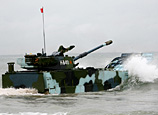
But making a good disaster film is a challenge for Chinese filmmakers. "Sailing in Fog" (1957) about an accident onboard a cruise from Shanghai to Ningbo is considered the first. Since then many films have been made about typhoons, airline disasters, avalanches and other catastrophes, but the response has been poor because of inept storytelling and visual effects.
Famous directors have tried their hand. The 1937 Nanjing Massacre is a familiar subject, as in Lu Chuan's "City of Life and Death" (2009) and Zhang Yimou's "The Flowers of War" (2011).
China's disaster films also lack philosophic depth, says critic Li Tian.
"The filmmaker must be very strong in philosophical thinking and sensitive to the influence and long-term trauma of the catastrophe," Li says. "He must have the courage to face up to our past and present."
Gu Xiaoming, sociologist and professor at Fudan University, praises "Back to 1942" for portraying human weakness and inadequacy in the face of disasters and moral dilemmas. It defies stereotypical heroism, he says.
"People's anxieties and fears about the end of world exist throughout history," Gu says. "Rapid economic and scientific development cannot prevent a sense of insecurity. The only thing more frightening than a disaster is people's growing selfishness and indifference toward others. A good disaster film always sparks reflection about our current situation."
Notable Chinese disaster films
"Crash Landing" (2000)
Inspired by the first widely known emergency airliner landing in China, the film by Zhang Jianya is one of the first domestic productions that generated wide interest in the disaster film genre. Made on a spectacular scale, it emphasizes the value of team work in the face of crisis.
"City of Life and Death" (2009)
Also called "Nanking! Nanking!," the film is shot from the point of view of a Japanese soldier. It took director Lu Chuan four years to make the black-and-white film using hand-held cameras that create a newsreel documentary feel.
"Aftershock" (2010)
The first Chinese IMAX movie grossed 660 million yuan and set a box-office record that was soon broken by an action comedy. Considered to be China's most successful disaster movie, it revolves around a mother and daughter who rebuild their relationship 32 years after separation during the 1976 Tangshan earthquake.

















![]()
